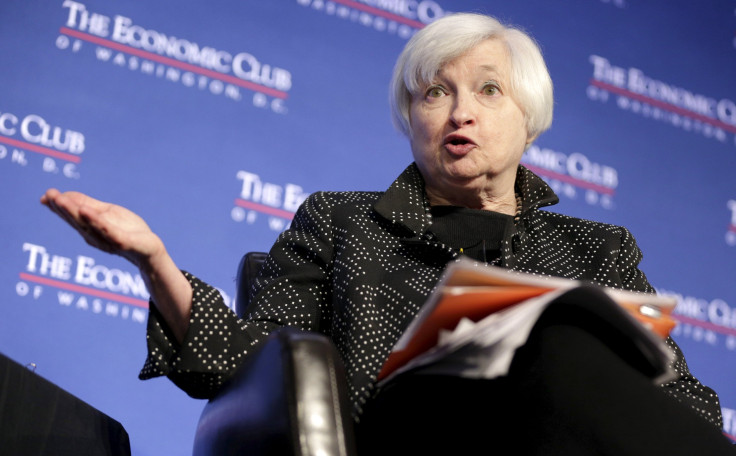Interest Rate Hike Sends Dow Jones, S&P Up, Dollar Index Down As Market Reacts To Federal Reserve Decision

Major U.S. stock market indexes spiked following Federal Reserve Chair Janet Yellen’s announcement the central bank would raise its policy interest rate Wednesday.
The Dow Jones Industrial Average (DJI) jumped nearly 68 points, or a third of a percent, in the minutes leading up to and immediately after the Fed’s decision. The index of 30 large companies’ share prices closed at 20,950, above an opening value of 20,873, driven by growth in shares of UnitedHealth Group Inc. (UNH), Verizon Communications Inc. (VZ) and Chevron Corp. (CVX).
Read: Will The Federal Reserve Raise Interest Rates?
The S&P 500 (GSPC) saw a similarly rapid climb around the time of the 2 p.m. announcement, rising more than 9 points, or nearly 0.4 percent, with a close of 2,385 — more than 14 points ahead of its market open. Likewise, the Nasdaq Composite (IXIC) index jumped nearly 10 points, or a fifth of a percent, around 2 p.m., settling at about 5,900 points by market close, ahead of a 5,866 market open.
The dollar, on the other hand, saw movement in the opposite direction, with the currency’s index (DXY) taking a 1 percent plunge in the two hours after the Fed’s announcement.
The market’s response was likely a result of the message of caution Yellen projected in her announcement, in which she said the federal funds rate — a bank-to-bank lending rate closely followed by interest rates on mortgages, bonds, credit card debt and other assets — “is likely to remain, for some time, below levels that are expected to prevail in the longer run.”
The central bank lowers the rate, as it did following the financial crisis, to stimulate borrowing and spending in response to economic catastrophes, but has slowly elevated it toward what Yellen and her colleagues often refer to as a “neutral” level of 3 percent over the past 2 1/2 years. With the rate at its current level — as of Wednesday, a range of 0.75 percent to 1 percent — the Fed will have nowhere to turn in the event of a sudden recession.
But while a drop in the rate stimulates economic activity, a hike tends to reel in growth, frightening shareholders, and slows inflation, boosting the value of the dollar. A sign that the central bank will take a more gradual approach can do just the opposite, as markets showed Wednesday.
© Copyright IBTimes 2024. All rights reserved.












